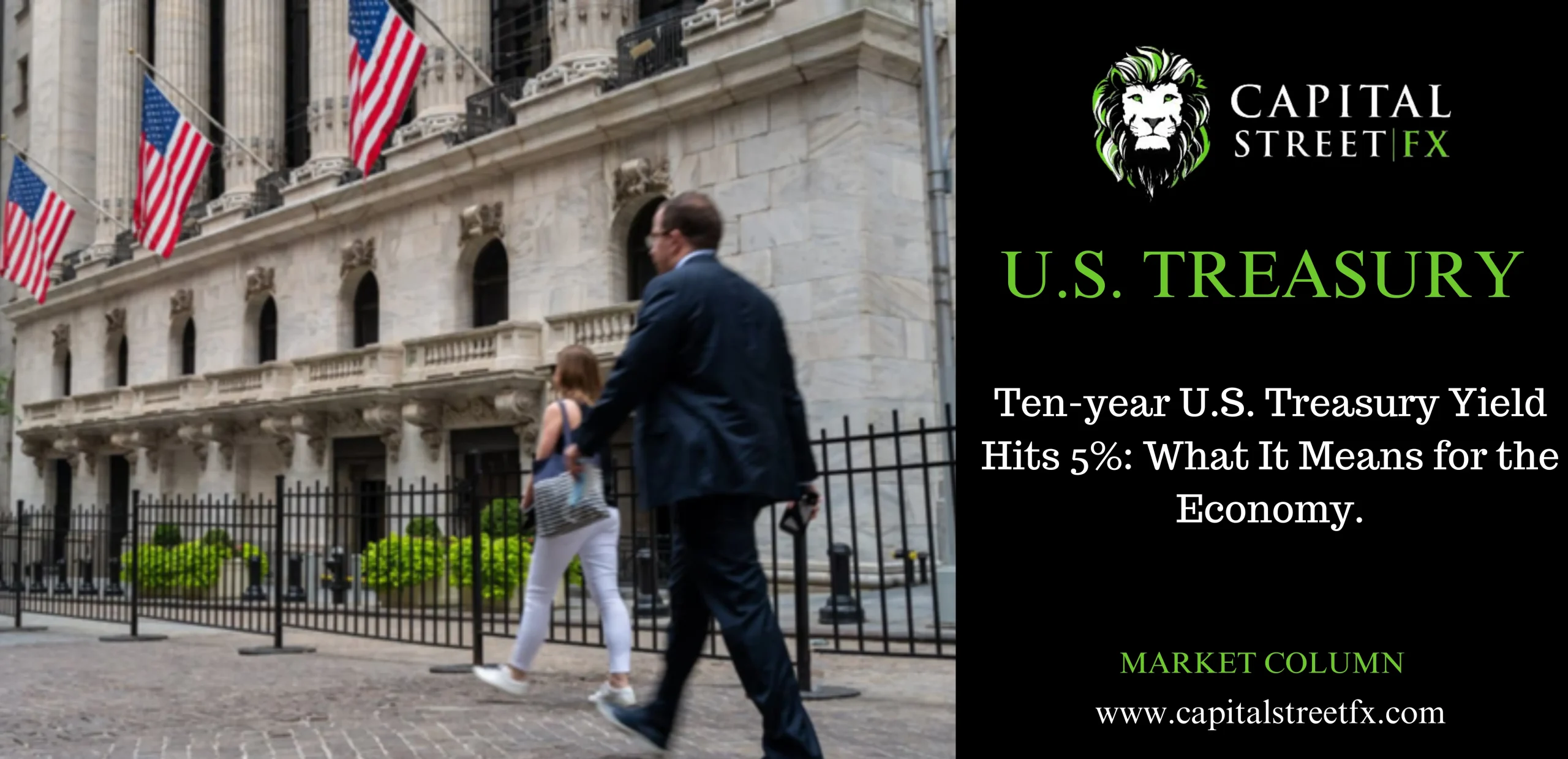Ten-year U.S. Treasury Yield Hits 5%: What It Means for the Economy.
Introduction
The financial world was abuzz on Monday when the yield on the 10-year U.S. Treasury note crossed the significant 5.0% mark. This achievement, albeit brief, brought back memories of the last time it happened in July 2007. In this article, we will delve into the reasons behind this surge in the 10-year Treasury bond yields and its potential implications.
A Safe Haven No More
The 10-year U.S. Treasury bond is often considered a safe-haven investment, especially during times of economic uncertainty. It has also been a crucial reference point for global borrowing costs. However, recent events have shaken this perception.
Economic Growth and Fiscal Imbalances
The primary driver behind this surge is the collective expectations of robust U.S. economic growth. Additionally, concerns about fiscal imbalances have played a significant role. Let’s break this down further.
The Rise of Yields
Yields for longer-term bonds began to spike after Federal Reserve Chair Jerome Powell hinted at the possibility of more stringent financial conditions in response to the strength of the U.S. economy and its robust job market.
Breaking Down the Numbers
On that fateful Monday, the 10-year yield reached 5.004%, marking an approximate 8 basis point increase for the day. It’s noteworthy that it briefly touched a 16-year high of 5.001% last Thursday, signifying a total increase of 160 basis points since mid-May.
The Fed’s Influence
The Federal Reserve’s hawkish stance has played a pivotal role in this surge. Moreover, concerns about fiscal matters have led to an increase in term premiums within the yield curve.
Government Spending Woes
The cost of U.S. Treasury borrowing has risen as a divided Congress grapples with disputes over next year’s spending bills while implementing stopgap measures to prevent government shutdowns.
The Fed’s Bond Holdings
Simultaneously, the Fed has been reducing its bond holdings, which has added to the complexity of the situation.
A Growing Budget Deficit
In the year leading up to September 2023, the U.S. government reported a budget deficit of $1.695 trillion, marking a 23% increase from the previous year. This deficit is the largest since the $2.78 trillion deficit witnessed in 2021 during the COVID pandemic.
Biden’s Spending Request
This budget deficit coincides with President Joe Biden’s request to Congress for $100 billion in new foreign aid and security spending. The allocation includes $60 billion for Ukraine, $14 billion for Israel, and funding for U.S. border security and the Indo-Pacific region.
Expert Opinions
Kyle Rodda, a senior financial markets analyst at Capital.com, shared his perspective, stating, “It’s a major milestone that the entire yield curve is at or above 5%. Debate surrounds what this signifies and what’s driving this dynamic. It’s undoubtedly a combination of robust economic growth, increased issuance, and quantitative tightening.”
The Broader Impact
The rise in yields isn’t limited to the 10-year Treasury note. The yield on the two-year U.S. Treasury increased by 4 basis points to 5.125%, while the 30-year yield rose by 8 basis points to 5.164%.
Conclusion
In conclusion, the crossing of the 5.0% mark by the 10-year U.S. Treasury yield is a significant event with implications for both the U.S. and global economies. It reflects the interplay of economic growth, fiscal concerns, and government policies. The financial world will be watching closely to see how this situation unfolds.

